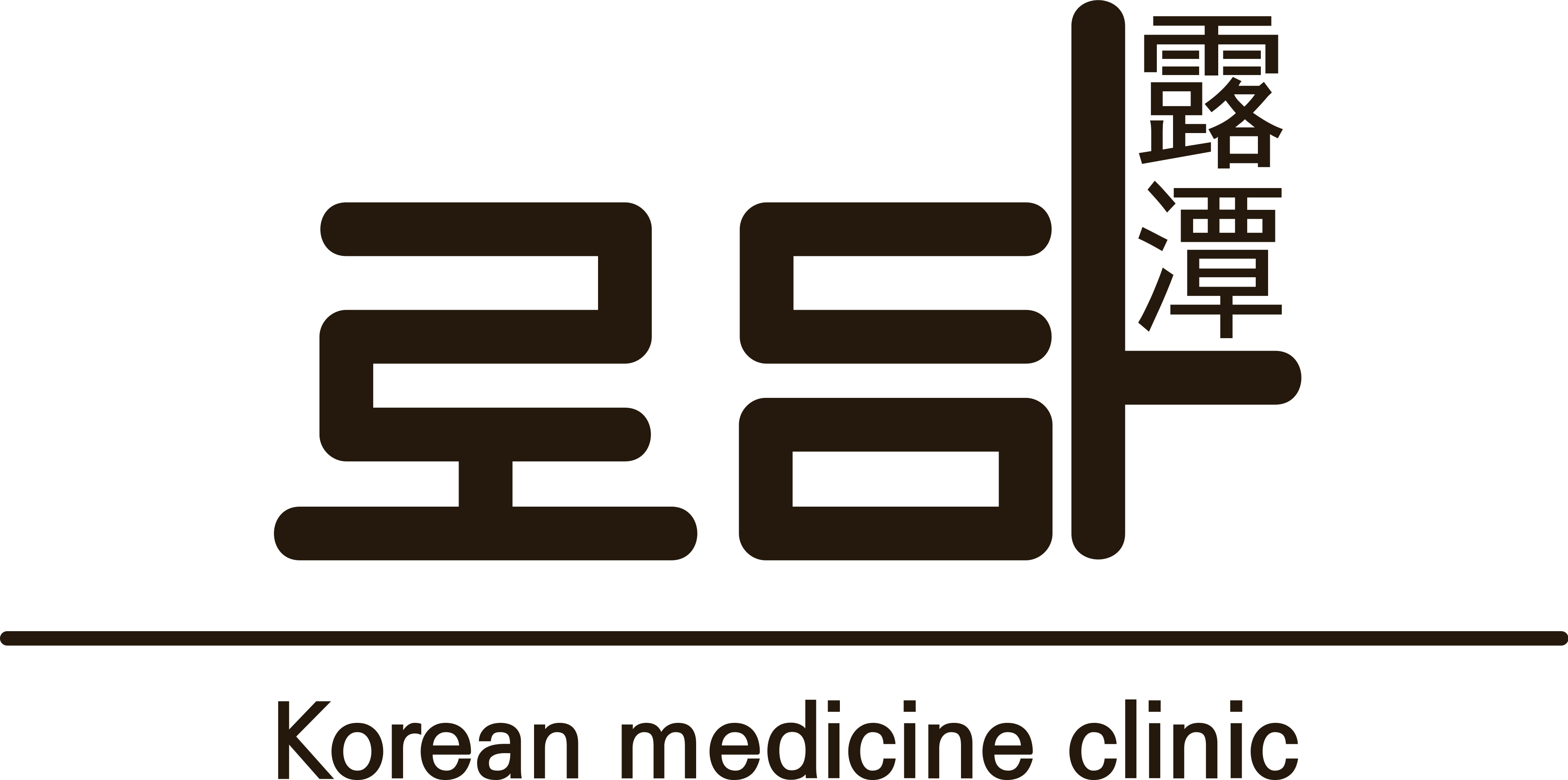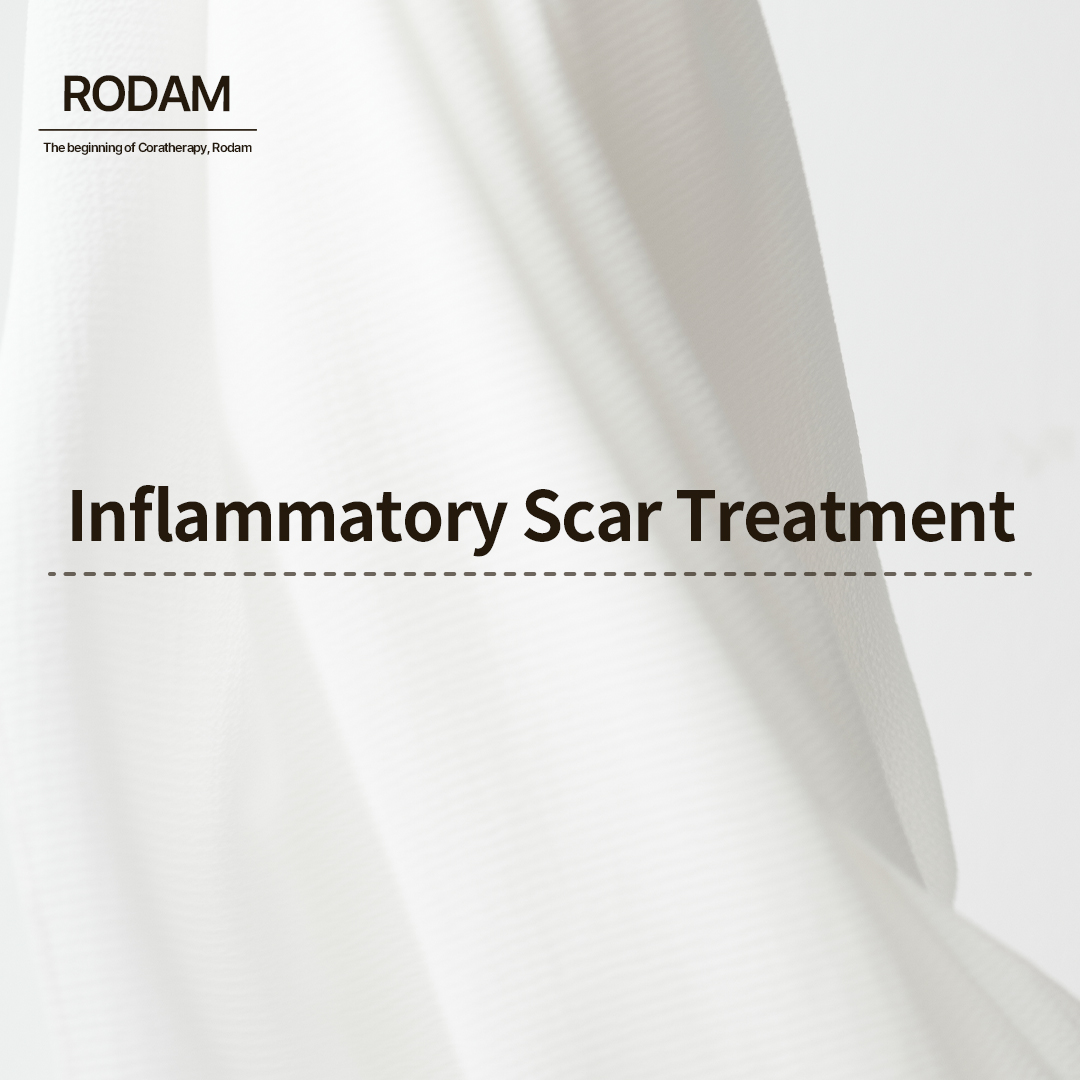
Review of Coratherapy for Inflammatory Scars at Rodam Korean Medicine Clinic
Hello, this is Rodam Korean Medicine Clinic, the beginning of Coratherapy for scar removal.
Today, we would like to introduce a case of treating an inflammatory scar that formed recently.
This patient is a man in his 50s who started experiencing unexplained inflammation
under his right eye on his cheek about a month ago,
and pus began to accumulate in the inflamed area.
Afterward, he visited a dermatologist and received injections, ointment treatment,
and medication. However, a large scab formed and fell off,
leaving a significant indented scar in its place.

Case :: A recently formed scar
History :: Male in his 50s
One month ago, unexplained inflammation appeared under the right eye
Pus began to accumulate in the inflamed area
Visited a dermatologist and received injections, ointment, and medication
Afterward, a large scab formed and fell off,
leaving a significant indented scar
Report :: Upper scar – 9 sessions of Coratherapy
Lower scar – 11 sessions of Coratherapy
The patient visited Rodam Korean Medicine Clinic 10 days after the scar had formed.
There were two long, deep scars vertically under the right eye on the cheek.
The upper scar was narrow and deep, while the lower scar was broader.
The scars were prominent, deep, and relatively large.
Although the patient stated that the inflammation caused the scars,
the process and appearance of the scars were very similar
to the shingles scars we often treat.
Thus, we anticipated that the treatment process and results would
progress similarly to those for shingles scars.

When it comes to scars, the condition of the scar—such as its depth, shape, and location—
is more important than its cause.
Since the scar was only 10 days old, it was still very red.
Recently formed scars often have a pronounced redness,
which can be a major concern for patients.
Many patients are curious about when the redness will fade.
Typically, the original redness improves significantly after about 3 to 6 months,
so there’s no need to worry too much.
Additionally, the redness may temporarily increase due to the treatment,
but this treatment-induced redness usually fades significantly within a week
and disappears completely within 2 to 3 months after the final session.
Recently formed scars often have softer skin tissue,
which aids in regeneration.
On the other hand, older and harder scars often improve
as the skin softens during the healing process.
Therefore, if a scar has recently formed,
and the indented area is clearly visible with no surface wounds,
it’s best to seek treatment promptly.
For deep and well-defined inflammatory scars like these,
the priority is to fill in the depth first.
Then, the edges should be smoothed out
to create a seamless transition.
Once the depth is filled and the edges are softened,
the scar will appear significantly improved.
We explained this treatment process and the number of sessions
to the patient and proceeded with the treatment,
focusing on providing deep stimulation based on the scar’s shape.

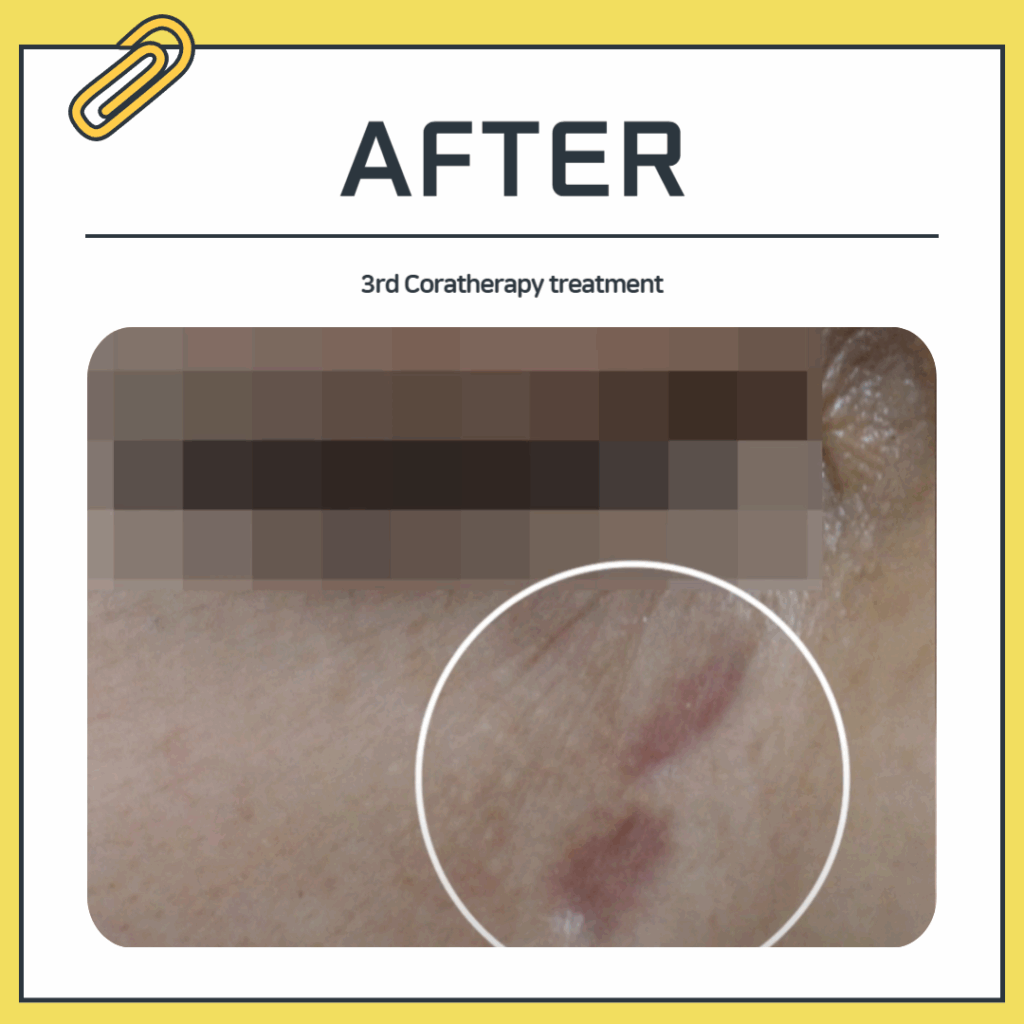
After 3 sessions of Coratherapy
In the photo taken after 3 sessions, you can already see
that the base of the scar has risen,
and the edges have softened.
The depth has improved by about 40–50%,
and the patient reported noticing significant changes.
When such changes are visible after just 3 sessions,
it indicates that regeneration is progressing well.

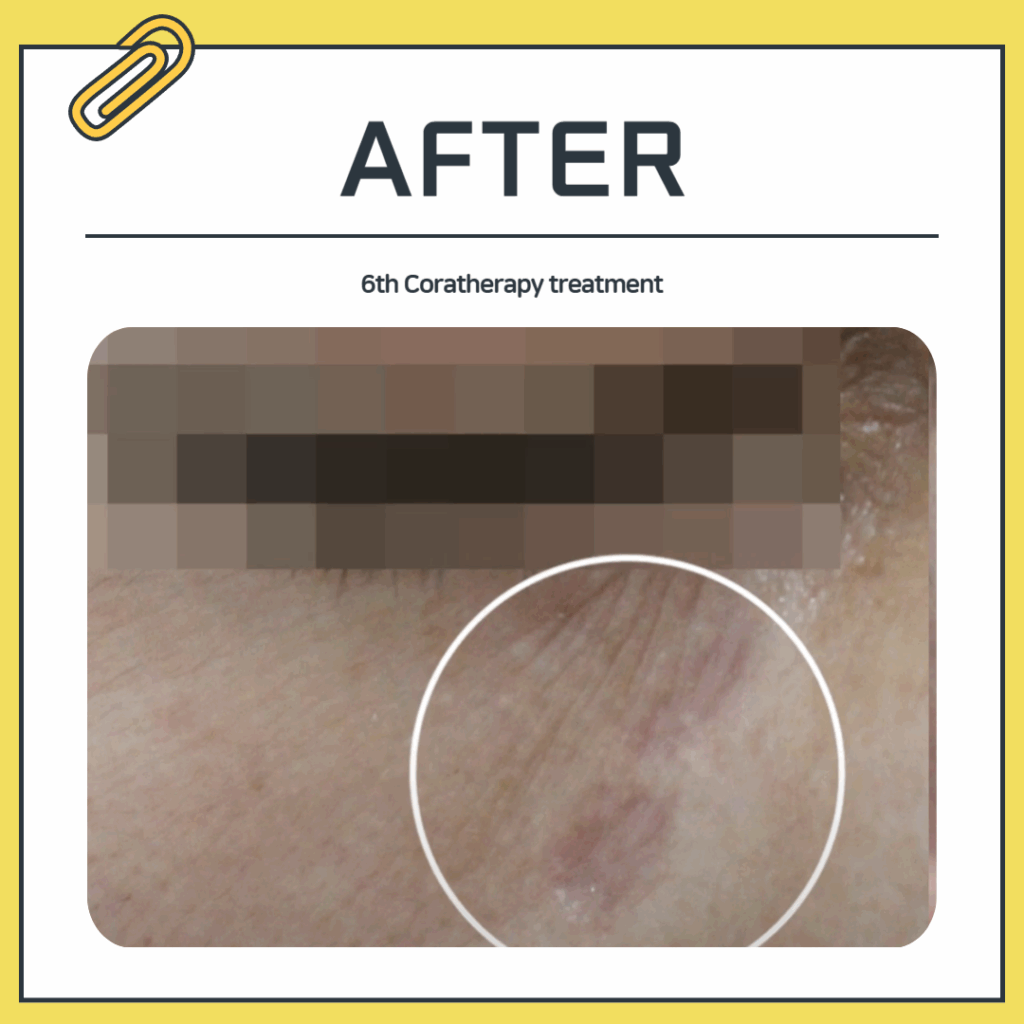
After 6 sessions of Coratherapy
This photo was taken after 6 sessions.
Compared to the initial state, the scars have filled in significantly,
and the redness has faded considerably.
However, the lower scar still has some remaining depth,
and the overall edges of the scars are still slightly visible.
The patient expressed a desire for additional sessions,
so we recommended and proceeded with 4 more sessions.

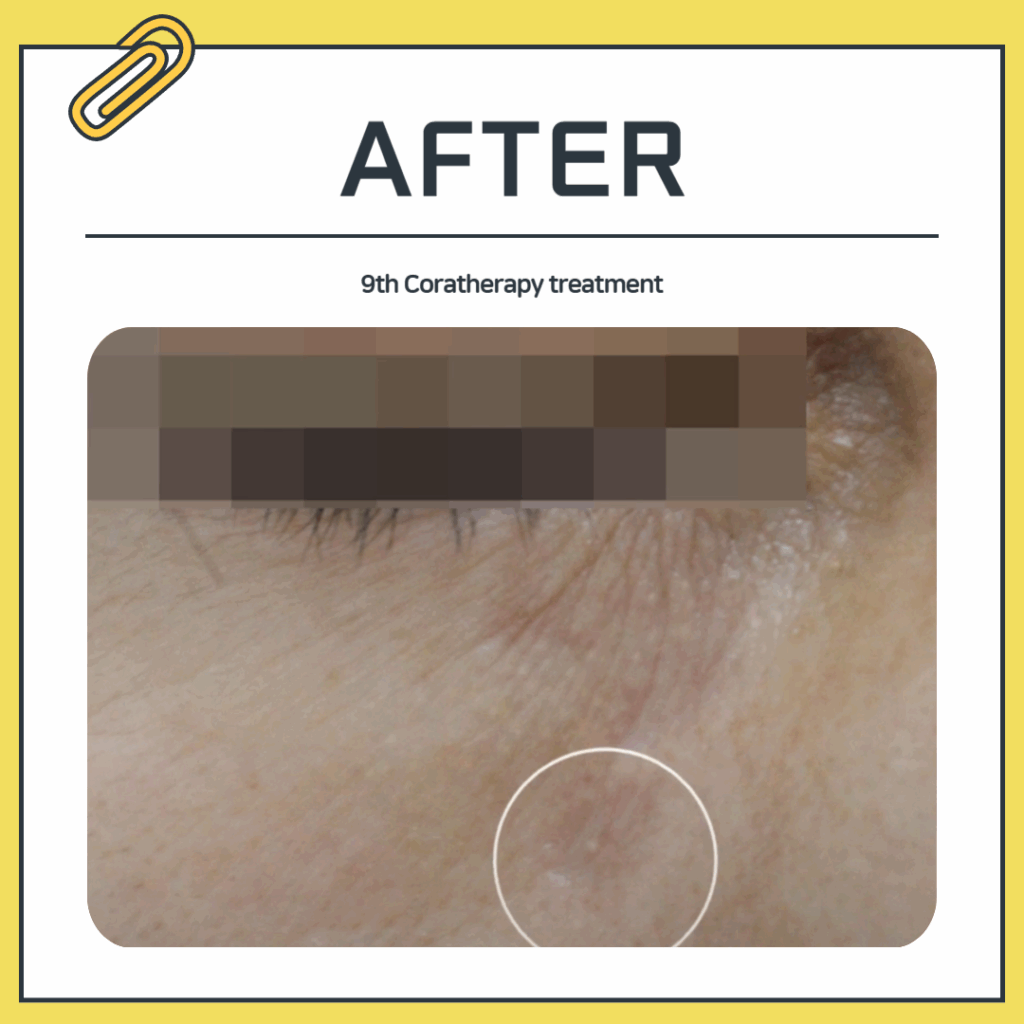
After 9 sessions of Coratherapy
This photo was taken after 9 sessions.
The upper scar has improved so much that it’s no longer visible,
and only about 10% of the lower scar remains.
We concluded treatment for the upper scar,
and the patient received 2 additional sessions
for the lower scar to complete the treatment.
When comparing the initial and final photos,
you can clearly see how much the deep and prominent scars
have improved.
The patient was initially very distressed
by the sudden appearance of large and deep scars,
but thanks to prompt and effective treatment,
the results were highly satisfactory.

Even large and deep inflammatory scars like these
can show significant improvement and healing.
Recently formed scars, in particular, have softer skin
and respond well to treatment.
If you have developed an indented scar,
don’t let it stress you out.
We recommend seeking consultation and treatment
as soon as possible.
Since 2006, Rodam Korean Medicine Clinic’s Coratherapy
has been dedicated not only to addressing your scar concerns
but also to healing emotional scars.
We are constantly researching and improving
to provide the best care possible.
We hope today’s article has helped alleviate your concerns about scars.
If you have any further questions, please don’t hesitate to reach out to us.
